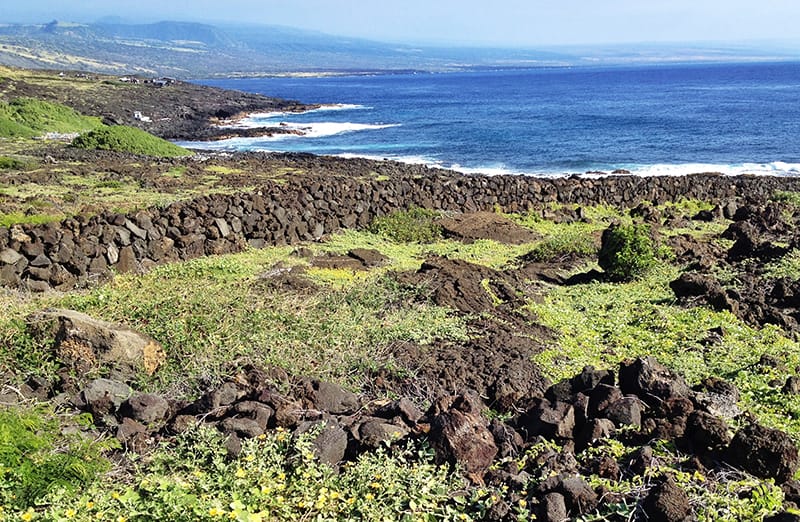Kaunamano

Kaunāmano means “where the multitudes are placed/settled” telling of the large ancient villages that thrived there. The Trust for Public Land purchased the 1,363 acre Kaunamano property and conveyed it to the Ala Kahakai Trail Association (ATA), a Hawai’i island-based, Native Hawaiian non-profit whose mission is to support and guide a community-managed trail that honors those who came before and perpetuates traditions for those who follow – with protocols and respect for Hawai‘i’s past, present and future. ATA will steward the land in close partnership with the Ka’u community, descendants, and nonprofits.
Protecting Kaunāmano preserves a vast cultural landscape with hundreds of cultural sites including its two villages at Pāʻula and Paukū, house sites, heiau (temples), iwi kūpuna (burials), petroglyphs, and extensive lava tube networks including the famous cave of Puhi‘ula with its rock-lined anchialine pool teeming with ʻōpaeʻula (native shrimp).
Kaunāmano’s protection conserved 3.3 miles of coastline and marine resources including a tidepool complex, coves, and sea caves. The nearshore area is home to migrating humpback whales, dolphins, endangered monk seals and Hawksbill turtles, threatened green sea turtles, and an abundance of fish, limu, and shellfish. The Ka‘ū community can now forever rely on these diverse marine resources for subsistence fishing, gathering, and cultural practice. Kaunāmano’s coastline and the Māniania Pali will provide protected habitat for native coastal plants and native seabirds like noio (black noddies) and koa‘e kea (white tailed tropic birds) that nest along the cliffs.
The property’s protection will allow Kuahiwi Ranch to continue grazing cattle on the property while balancing the protection of its unique cultural and natural resources. Kuahiwi Ranch is owned and operated by three generations of the Galimba family and specializes in local, free-range, grass-fed beef which contributes to Hawai’i’s food security.
The County of Hawai‘i’s Public Access Open Space and Natural Resources Preservation Program (PONC) contributed $4.31 million, and the State Legacy Land Conservation Program (LLCP) contributed $2.4 million toward the conservation purchase. The property is now encumbered by a perpetual conservation easement owned by the County of Hawai‘i restricting the land to cultural, conservation, and agricultural uses, as well as a permanent deed restriction required by LLCP.
The Ka‘ū community has been working for decades to protect their beloved 80 mile coast to honor their kūpuna and empower future generations to perpetuate their culture and rural, subsistence lifestyle.

